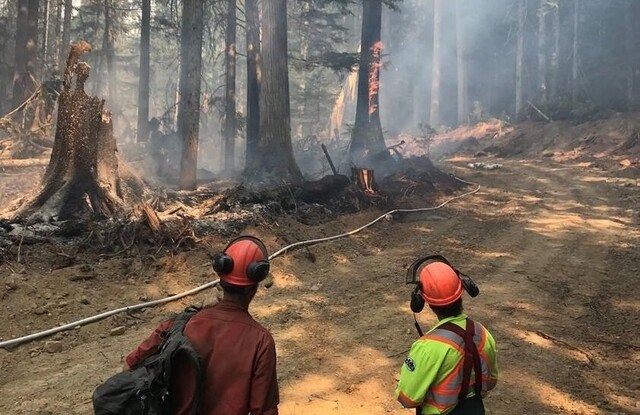Wildfires are dynamic and unpredictable by nature – but the BC Wildfire Service has experts whose job is to forecast fire behaviour.
And, that job is all the more important as a heat wave grips the province.
As of Thursday, there were 38 fires burning across the province in what has been a quieter than usual fire season, thanks to a wet spring. But, 12 of those fires had started in just the previous two days, and with temperatures climbing higher, so does the risk.
"We have team members dedicated to understanding and predicting how they may behave. This understanding influences how we prepare for new ignitions and how we respond to fires," the wildfire service says.
Fire behaviour analysts predict how wildfires will act, depending on forest fuels, topography and weather patterns.
"Understanding where, when and how a wildfire will act is key when making important operational decisions," BCWS says.
Fire crews and analysts, in turn, receive their information from fire weather forecasters.
Current hot, dry conditions indicate fires that start in the coming days are more likely to show increased fire behaviour and faster spread rates as forest fuels continue to dry out.
The primary objective of the analyst is to provide crews and operational staff with the information needed to ensure the safety of staff and the public.
Selection, allocation, and placement of crews are heavily influenced by immediate fire behaviour, while extended operational goals and recommendations for evacuation orders and alerts are based on long-term predictions.
Fire behaviour specialist trainee Ben Boghean began his wildfire career in Alberta before settling on Vancouver Island, where he works within the Coastal Fire Centre.
Predictions involve the collection of weather data, observation of fire behaviour, and assessment of the topography and distribution of fuel types across the landscape.
Weather is arguably the greatest determinant of fire behaviour – winds, precipitation, temperature and humidity are especially influential to overnight fire behaviour.
Weather models, satellite imagery and daily forecasts are used to identify any unexpected fire growth or changing conditions — but local knowledge is the most valuable tool in the toolkit, "whether it be forecasters or feedback from crews working on the fire," says Boghean.
During the 2021 wildfire season, Boghean worked on the Sparks Lake, Ashcroft, Tremont Creek, Embleton Mountain, and White Rock Lake wildfires.
He says "it’s incredible" to hear crews' first-hand accounts and understanding of fires as they fight them.
Jesse Ellis is one of four staff weather forecasters with the Predictive Services Unit of the wildfire service.
He plays a key role behind the scenes, making meteorological data relevant and valuable to firefighters.
Satellite imagery, radar, field observations and weather models are used to give field crews the information they need to plan their work on the fire line. His work also informs other aspects of the BC Wildfire Service, including prevention and preparedness.
Ellis says his time on an initial attack crew helped him become a better forecaster and emphasized the importance of staying connected with fieldwork in his current position.
"My forecasts improve after I've gotten back out into the field to kick the dirt, or get on a drip torch for an afternoon of burning. It helps to remind me what's important in our work," he says.
The three most critical weather factors he focuses on are wind, relative humidity and atmospheric stability.
All three can be challenging to predict, but each is a strong driver of fire behaviour. In addition, his weather information is used by other members of BC Wildfire Service to predict how much a fire may grow. This can inform potential evacuation orders or warnings for field crews.
During the winter, he supports partner agencies such as the Ministry of Transportation in its work to predict and manage avalanche risk.
During spring and fall, his focus is on prescribed fire, so he stays operational year round.
During wildfires or prescribed burns, Ellis monitors conditions to ensure the weather is unfolding according to plan, ready to advise field staff if conditions begin to change unexpectedly.





